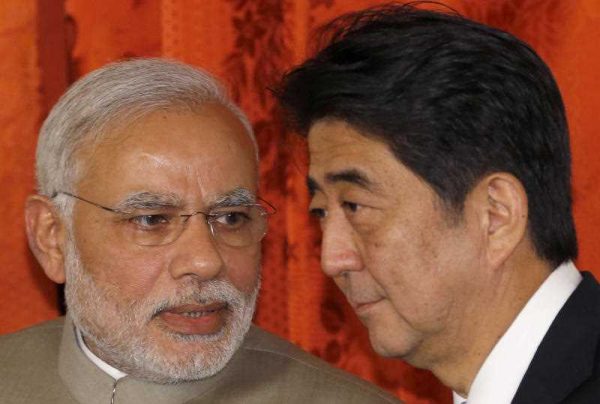The mutual warmth expressed at their meeting in Kyoto confirmed strong personal chemistry between the two national leaders, who have both publicly congratulated each on twitter on their electoral successes. But personal chemistry is not the only reason for Modi to make Japan his first overseas destination beyond the subcontinent.
More than most of his predecessors, Modi is familiar with Japan and recognises its value for India’s economic development. Although never before a national parliamentarian or minister, Modi is not an unknown political figure in Japan. As chief minister of Gujarat state he visited Japan twice — while banned from entering the United States — and established good rapport with senior Japanese political figures, including Shinzo Abe who was then in opposition. During this time Modi travelled not only to Tokyo but also to Nagoya, Osaka and Kobe, holding meetings with high-profile business leaders and successfully attracting huge Japanese investment in Gujarat.
Abe and other Japanese leaders recognise that unlike many of his predecessors in the last three decades, Modi stands on solid political ground. Delivering a landslide electoral victory to his Bharatiya Janata Party in May this year, Modi secured his place as India’s prime minister for the next five years. Modi’s unprecedented national political victory is based on his electoral promise to the people of India that his administration will make a real difference to India economically, political and socially. To this end Modi finds Japan a key economic and strategic partner.
Modi went to Japan with three goals in mind: to seek closer economic partnership with Japan through greater Japanese investment in India’s infrastructure projects including bullet trains; to secure cooperation on defence technology; and to finalise a civil nuclear agreement with Japan. These are not new items on the India–Japan cooperation agenda, but — being a pro-business Indian leader at the top supported by a solid mandate for India’s economic development — Modi was confident of breaking new ground in Japan, especially with Abe. The two national leaders hold similar viewpoints on economic growth in their respective countries and are concerned by the changing geo-political environment in the region.
There were no significant breakthroughs in the nuclear and defence cooperation fields. Yet Modi secured billions of dollars in investment commitments for major infrastructure projects, although not specifically for bullet trains. Both leaders confirmed through a ‘Tokyo Declaration’ that the two nations will work towards further progress in areas of mutual interest such as nuclear power technology, search and rescue planes (the US-2 amphibious aircraft) and bullet trains.
Modi’s achievement clearly lies in assuring his interlocutors in Japan that under his leadership India is ready to get rid of its ‘red tape’ and instead roll out ‘red carpet’ to Japanese investors. He has promised to set up a special management team in the Prime Minister’s Office to facilitate Japanese investment in India. Few will challenge the worth of Modi’s ideas since he implemented many of them as chief minister of Gujarat. But many observers doubt that he can emulate his Gujarat experience on a national level due to the federal structure where support from states is essential to implement policies nationally.
Rhetorically the two leaders reminded each other of their mutual goodwill and future potential for cooperation. Modi sees ‘only goodwill and mutual admiration’ between India and Japan, while Abe believes India holds for Japan ‘more potential than any other relations’. The pair has added ‘special’ to their existing lexicon of ‘strategic and global partnership’ to confirm a ‘special strategic and global partnership’, symbolising an upgrade in this bilateral relationship.
While both leaders are concerned about China’s rise and its assertiveness, neither leader talked directly about China or a ‘third party’ in their meetings. Prime Minister Modi in one of his speeches stated his preference for economic development (vikasvad) over expansionism (vistarvad), which is code for China’s assertiveness and expansionist actions in the South and East China Seas and its claim on Indian territories.
Although no big announcements resulted from Modi’s visit to Japan, the warmth of his reception signals the trip was a huge symbolic success. Wherever he visited, whether a temple or a primary school for community engagement, business meetings, or a summit meeting, Modi clearly wanted to engage with the Japanese people and their government. Interlocutors were impressed by his sincerity and genuine interest. This is surely no small achievement for a freshly minted Indian prime minister.
Purnendra Jain is Professor in Asian Studies at the University of Adelaide.

